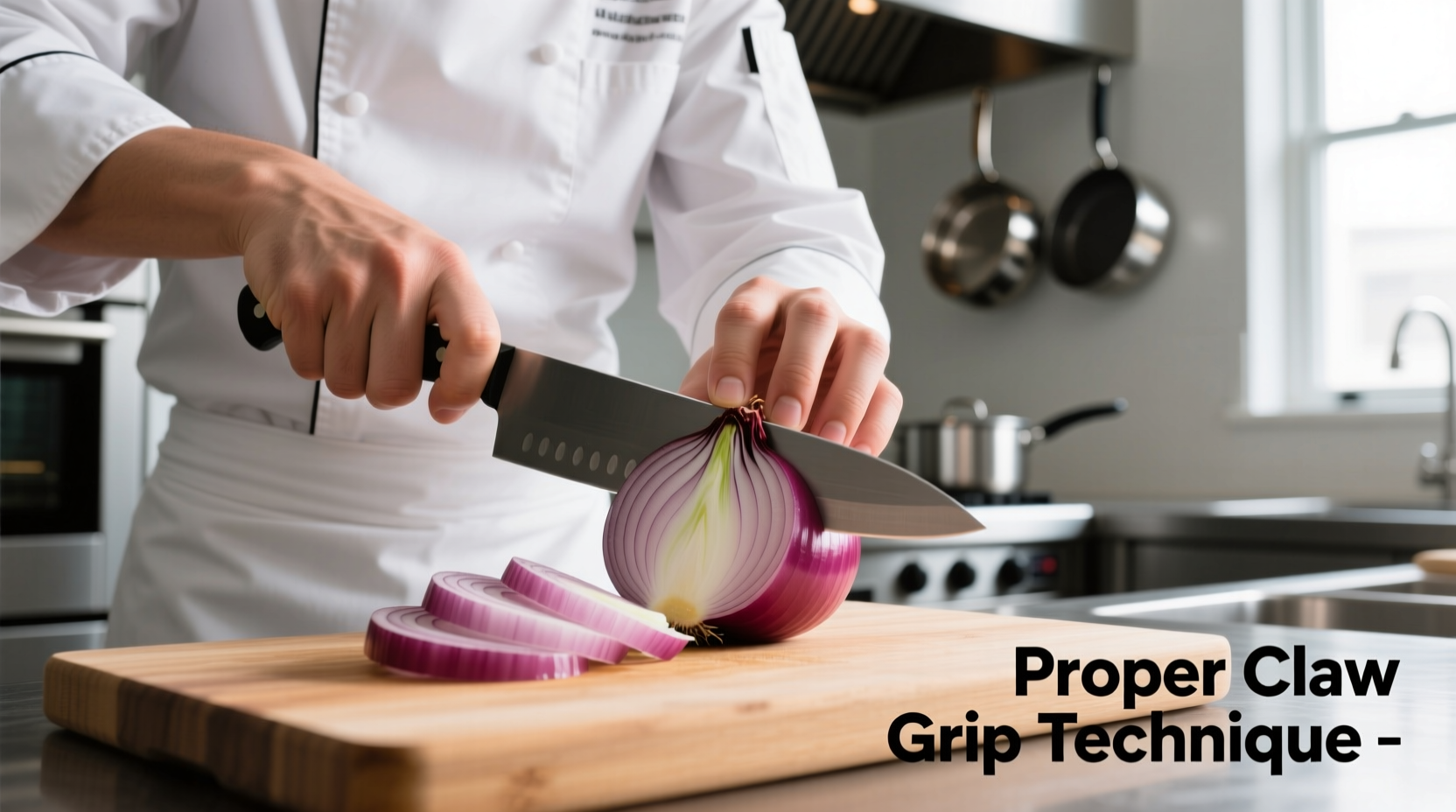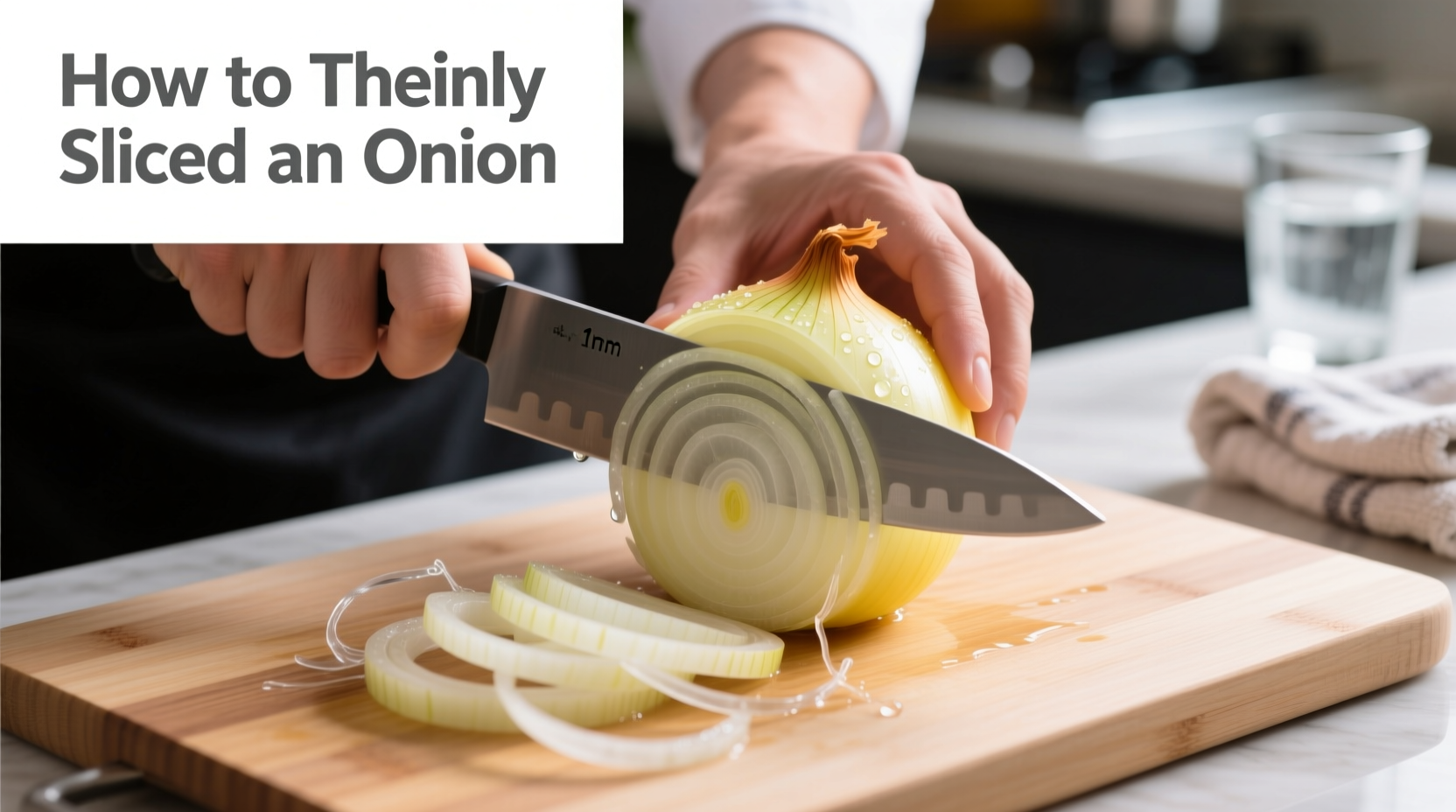Why Mastering Thin Onion Slices Transforms Your Cooking
Thinly sliced onions aren't just for presentation—they unlock better flavor distribution, faster cooking times, and improved texture in dishes from French onion soup to fresh salsa. Professional chefs consistently use this technique because uniform slices cook evenly and absorb flavors more effectively than chunky cuts.
Essential Tools for Perfect Onion Slices
You don't need specialty equipment, but the right tools make a significant difference:
- 8-10 inch chef's knife with a sharp, pointed tip (dull knives crush rather than cut)
- Cutting board with non-slip surface (wood or high-density plastic)
- Bowl of cold water for reducing tears (optional but helpful)
| Slicing Method | Thickness Range | Best For | Time Required |
|---|---|---|---|
| Professional Thin Slice | 1-2mm | Ceviche, tartare, quick-pickling | 45-60 seconds |
| Standard Slice | 3-5mm | Sautéing, stir-fries | 30-45 seconds |
| Julienne Cut | 2-3mm strips | Garnishes, salads | 60-75 seconds |
Step-by-Step: Professional Onion Slicing Technique
Step 1: Prepare Your Onion
Place the onion on your cutting board and slice off the stem end (the pointy top), leaving the root end intact. This maintains structural integrity during slicing. Peel away the papery skin and outer layer, then cut the onion in half from root to stem. Never remove the root end until after slicing—it's your anchor point.
Step 2: Position for Precision
Lay one half flat-side down on the cutting board. The natural curvature creates a stable base. Position your non-knife hand with fingertips curled inward ("claw grip") to guide the knife while protecting your fingers. Your thumb and knuckles should rest against the blade's side.
Step 3: Execute the Thin Slices
Starting from the root end, make parallel cuts toward the stem end while maintaining consistent pressure. For paper-thin slices (1mm), space cuts 1/16 inch apart. Keep the root intact until the final slice—this prevents the onion from falling apart. Professional chefs recommend using the full length of your blade in a rocking motion rather than chopping straight down.

Step 4: Troubleshooting Common Issues
Problem: Onion layers separate during slicing
Solution: Keep the root intact until the final cut. If layers separate, press them back together gently before continuing.
Problem: Uneven slice thickness
Solution: Maintain consistent hand position and apply even pressure with each cut. Practice on one onion half while using the other for reference.
Problem: Excessive tearing
Solution: Chill onions for 30 minutes before cutting, use a sharp knife, or cut under running water. According to the USDA Agricultural Research Service, cold temperatures reduce the release of syn-propanethial-S-oxide, the compound that causes eye irritation.
When Thin Slicing Isn't Appropriate
While thin slicing works for many applications, certain dishes require different techniques:
- Grilling or roasting: Use thick wedges (1/2 inch) to prevent burning
- French onion soup: Medium slices (1/4 inch) provide better texture after long cooking
- Onion rings: Crosswise slices at 3/4 inch thickness
Perfect Applications for Thinly Sliced Onions
Thin slices excel in dishes requiring quick preparation or raw application:
- Pickled red onions: 15-minute quick pickle transforms sandwiches and tacos
- Ceviche: Raw slices absorb citrus marinade without overpowering fish
- Salads: Even distribution without overwhelming bites
- Garnishes: Adds visual appeal to finished dishes
Advanced Technique: The Japanese Katsuramuki Method
For translucent slices ideal for delicate dishes, professional chefs sometimes use the Japanese katsuramuki technique. This involves peeling the onion like a cucumber to create continuous ribbons. While not traditional for onions, culinary researchers at University of Minnesota Extension have adapted this method for specialty applications requiring paper-thin consistency.











 浙公网安备
33010002000092号
浙公网安备
33010002000092号 浙B2-20120091-4
浙B2-20120091-4